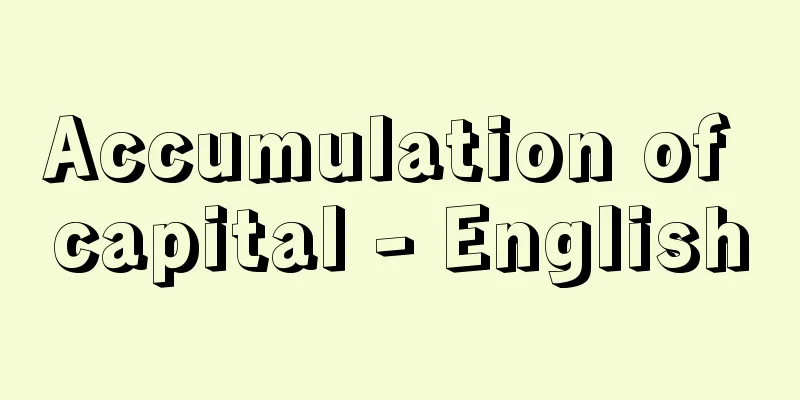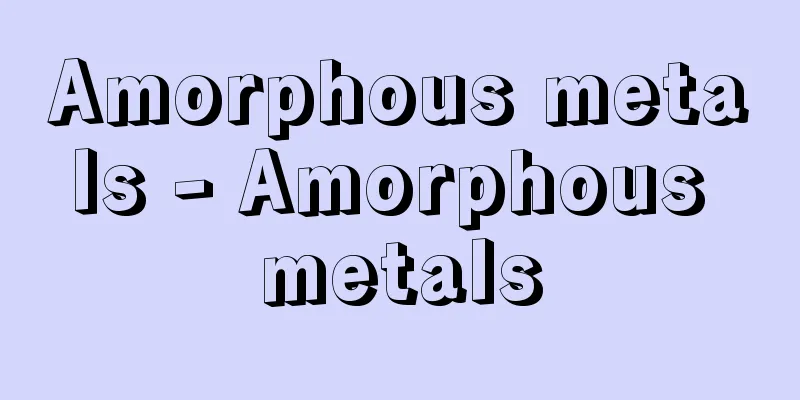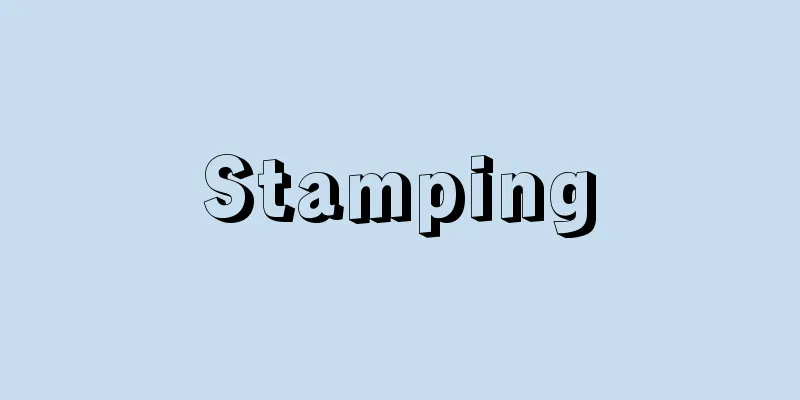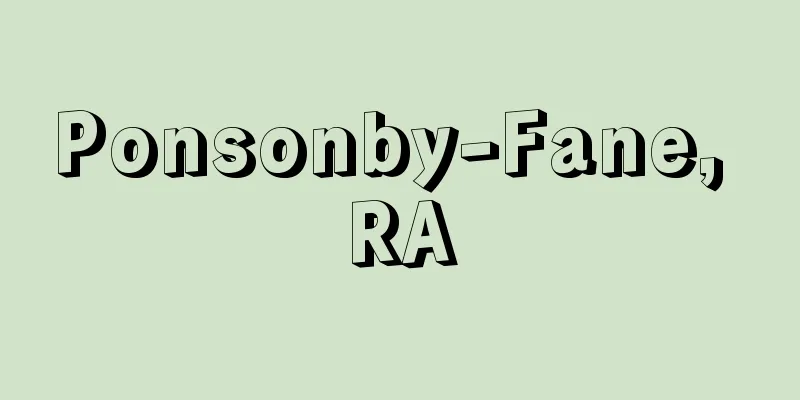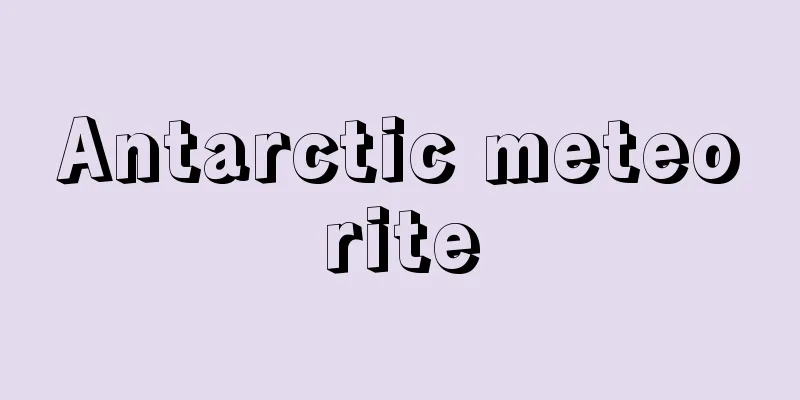Teachers' Union - Kyoinkumiai
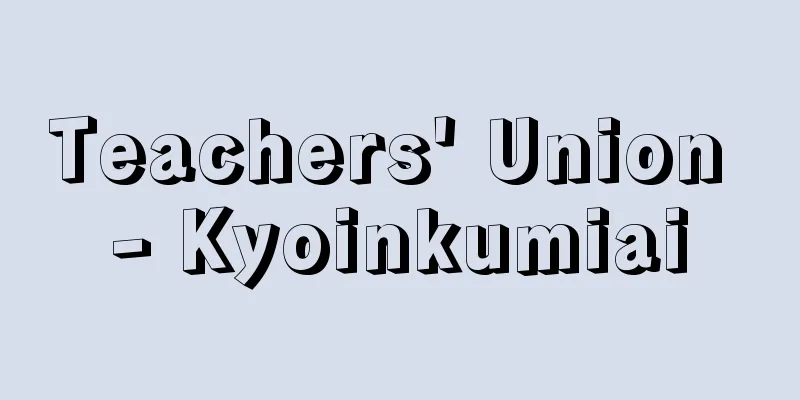
|
In the broad sense, it includes both labor unions or organizations of a similar nature that are formed primarily for the purpose of maintaining and improving the working conditions of teachers, and so-called employee organizations that aim to improve the job skills of employees. However, in the narrow sense, it means labor unions or teacher organizations of a similar nature. [Yaichi Wakai] Teachers' Associations around the WorldWith the establishment of modern public education, there was a need for large numbers of teachers, and teachers' associations were formed as independent professional groups, with the main purpose of those involved in education improving their professional skills. Their origins can be traced back to teachers' associations, which had a strong professional association character. From the second half of the 19th century to the first half of the 20th century, with the rise of labor movements in various countries, teacher associations that took on labor union characteristics began to be formed. A good example is the Syndicats des Instituteurs, a union of elementary school teachers formed in France in 1884. The National Education Association (NEA), which is widely known in Japan, was founded in 1857 as a professional organization, but in 1979, it was ordered by a federal court in Washington to comply with the Labor Management Reporting and Disclosure Act of 1952, and is considered to have recognized its nature as a labor union. The American Federation of Teachers (AFT), which has led American teacher unions along with the NEA, was formed in 1916 and was characterized by its strong labor union character, but it is said to have since become similar in character to the NEA. In the case of the UK, the National Union of Primary Teachers was formed in the same year that the public elementary education system was established by the 1870 Act, and later changed its name in 1889 to the National Union of Teachers (NUT), which has been actively engaged in activities to this day. [Yaichi Wakai] Building on the formation and development of teacher unions in various countries since the second half of the 19th century, teacher unions began to be organized on a global scale after the Second World War. The International Federation of Teachers' Associations (IFTA), an international organization for primary education teachers founded in 1926 as a professional organization, was re-established in 1946. In 1952, IFTA merged with the Fédération internationale des professeurs de l'enseignement secondaire officiel (FIPESO), a secondary teachers' union also with a professional organization character, to form the World Confederation of Organizations of the Teaching Profession (WCOTP). Meanwhile, the Fédération internationale syndicale de l'enseignement (FISE), which had a strong labor union character, was founded in 1946 with the aim of improving the social and economic status of teachers, protecting their rights as workers, and promoting global solidarity among teachers. However, in 1951, a faction that took a position close to the International Federation of Free Teachers' Unions, which advocated labor-management cooperation, split off from FISE and formed the International Federation of Free Teachers' Unions (IFFTU). After the end of the Cold War in 1993, this IFFTU decided to dissolve and join the WCOTP. Thus, Education International (EI) was born on January 26, 1993. [Tasaki Tomoyuki] Japanese Teachers' UnionJapan's teachers' union (in the narrow sense) dates back to the Japan Teachers' Union Keimeikai, which was founded in 1919 (Taisho 8) by Shimonaka Yasaburo. However, under the Constitution of the Empire of Japan, teachers' unions were not allowed to be fully active, and full-scale teacher union activity awaited the emergence of the All Japan Teachers' Union (Zenkyo) and the Japan Educators' Union (Nikkyo), which were formed in December 1945 (Showa 20) immediately after Japan's defeat in World War II. In June 1947, the two unions merged to form the Japan Teachers' Union (Nikkyoso). After this, the All Japan High School Teachers' Union (Zenkokyo) separated in 1950. Zenkokyo was renamed the Japan High School Teachers' Union (Nikkyo) in 1956, and split into left and right factions in 1963. In the wake of the anti-work evaluation campaign in 1957, the National Federation of Teachers' Organizations (Zenkyoren), which took a critical stance against the JTU, was formed in 1962, and after further twists and turns, the All Japan Teachers' Union Council (Zenkyo), organized by the mainstream faction of the JTU, was launched in 1989 (Heisei 1), and the JTU was effectively split up. Zenkyo then held discussions with the left wing of the Hidaka Kyokyo, and in March 1991, the new organization took the name All Japan Teachers' Union (Zenkyo). As of 1997, in addition to the Japan Teachers' Union (with approximately 303,000 members), Zenkyo (approximately 104,000 members), and Hidaka Kyoyo Uto (approximately 16,000 members), other nationwide teachers' unions continued to operate, including the All Japan Teachers' Federation (Zennikkyoren, approximately 27,000 members) and the National Council of Educational Administration Personnel Organizations (Zenkankyo, approximately 5,000 members), whose members are principals and vice principals. Of these five nationwide teachers' unions, Zenkankyo was organized in November 1974 primarily by the Tokyo Education Management Personnel Council, and its members are principals and vice-principals, making it different in character from the other four organizations which are made up of non-managerial staff. The aforementioned Zennichikyoren was formed on February 26, 1984, when the Japan Teachers' Federation (Nikkyoren) and the New Japan Teachers' Union (Shinkyoso), both critical of the Nikkyoso's campaign policies, united. There is also the National Federation of Private School Teachers' Unions (Zenkoku Shikyoren, approximately 20,000 members), an organization for private school teachers. In addition to these nationwide teacher unions, there are many others organized at the prefectural and municipal levels, and while they work in cooperation with higher-level organizations, they each take on their own initiatives. Teachers' unions are legally classified as "staff organizations" or "labor unions" depending on whether the organization is composed of public servants under the Local Public Service Act, National Public Service Act, or Special Act on Educational Public Servants, or composed of private school teachers and staff who are fully governed by the Labor Standards Act and Labor Union Act. Staff organizations and labor unions have similar objectives, but the degree of legal protection is different. While labor unions are guaranteed the right to organize, the right to collective bargaining (the right to conclude labor agreements), and the right to strike, staff organizations are not guaranteed the right to conclude labor agreements or the right to strike. Under the Local Public Service Act, a "teacher organization" is defined as "an organization or a federation of such organizations organized by employees for the purpose of maintaining and improving their working conditions" (Article 52, Paragraph 1). It is not possible to determine unambiguously what the definition of "maintaining and improving working conditions" should be, but in the case of the Japan Teachers' Union, the largest of the unions, it is notable for having waged a long-term "struggle against education reform," in which it opposed every educational policy put forward by the Ministry of Education (now the Ministry of Education, Culture, Sports, Science and Technology) under the so-called "55 System." The main "struggles" were the struggle against performance evaluations (1957-1959), the struggle against the curriculum (1958), the struggle against the nationwide simultaneous academic ability test (struggle against academic test, 1961-1962), the struggle against the Central Council for Education's policy (struggle against the Central Council for Education, 1964-), and the struggle against the new curriculum guidelines (national flag, national anthem, etc.) (1989-). Strikes were repeatedly carried out as part of these struggles, and for example, from the 1960s to 1988, about 6.82 million teachers and staff (the JTU and the left wing of the JTU) participated in strikes, of which 840,000 received disciplinary action, and the issue of how to support them through union dues has become a major issue. However, since the split of the JTU in 1989 (Heisei 1), nationwide teachers' unions, including the largest, Zenkyo, have become extremely cautious about carrying out strikes. One reason for this is believed to be that judicial decisions have been established to take the view that strikes are technically illegal (for example, the Supreme Court ruling on the "Nikkyoso/Tokyo Kyoso 4/11 Strike Case" of December 18, 1989, and the Supreme Court ruling on the "Saitama Kyoso 4/11 Strike Case" of April 27, 1990). At the same time, the collapse of the so-called "55 System" has led to a shift in political fluidity, and unions' attitudes toward education policy have also changed significantly. A major factor is the shift from an opposition/crushing approach to a participation/proposal approach. Since 1976, the membership rate of teachers' unions has been declining, especially among newly hired teachers. As a professional organization, teachers' unions are expected to develop creative activities supported by a high level of insight in order to be trusted and attractive to more teachers. For example, the JTU expressed its opposition to the establishment of a law regarding the national flag and anthem, but it is expected that the union will have the insight and practice to handle the national flag and anthem from an educational perspective. [Yaichi Wakai] "The History of the Educational Labor Movement, compiled by the Education Movement History Research Group (1970, Labor Junposha)" ▽ "Hoshino Yasusaburo, Documents on the Postwar Educational Labor Movement History 1945-1978, 2 volumes (1979, Labor Education Center)" ▽ "Wakai Yaichi and Matsui Kazumaro, Teachers' Organizations and Professionalism, compiled in Teachers, Parents and Children, 1979, Gakken)" ▽ "Oba Akitoshi, Japanese Education: Gazing at Children -- Testimony to the History of the Educational Labor Movement, compiled by the Eideru Research Institute (1994)" ▽ "Tsuchiya Motonori, Research on the History of the Modern Japanese Educational Labor Movement, compiled by the Japan Teachers' Union 21st Century Vision Committee, Now, Towards a Century of Open Education: The Japan Teachers' Union's Challenge, Changing Society and Education -- The Latest Educational Situation in Europe and the United States, compiled by the Japan Teachers' Union 21st Century Vision Committee (1995, Daiichi Shorin)" ▽ Ministry of Education, Culture, Sports, Science and Technology, Local Affairs Division Legislation Study Group, 'Practical Handbook for Personnel Relations with Teachers and Staff' (1996, Dai-Ichi Hoki Publishing)" ▽ 'On the Actual State of Organization of Teachers and Staff Unions' (Ministry of Education, Culture, Sports, Science and Technology, 'Board of Education Monthly', May 1998, Dai-Ichi Hoki Publishing)" ▽ Kawai Akira, '50 Years of Educational Research Creation and Reform: In Search of Human Education' (1999, Seirinsha) " ▽ Japan Teachers' Union, 'Japanese Education, Vol. 50' (2001, Hitotsubashi Shobo) [References] | | | | | | | |Source: Shogakukan Encyclopedia Nipponica About Encyclopedia Nipponica Information | Legend |
|
広義には、教員の勤務条件の維持改善を主たる目的として結成された労働組合またはそれに準じる性質の団体と、職員の職務能力の向上を目的とする、いわゆる職員団体の両方を含む。しかし狭義には労働組合またはそれに準じる性質の教員団体を意味する。 [若井彌一] 世界の教員団体教員団体は、近代公教育の成立に伴い、大量の教師群が必要となり、独立した職業集団として形成されたことを背景に、教育関係者がその専門的職能を向上させることを主たる目的として結成された。職能団体的性格の強い教員協会Teachers' Associationにその起源が求められる。19世紀後半から20世紀前半において、各国の労働運動の高揚のなかで教員団体も労働組合的な性格を帯びるものが結成されるようになった。1884年フランスで結成された小学校教員組合Syndicats des Instituteursはその好例である。 日本で広く知られている全米教育協会National Education Association(NEA)は、1857年にいわゆる職能団体として発足したが、1979年に至り、労使報告公開法(Labor Management Reporting and Disclosure Act of 1952)の適用をワシントン連邦裁判所の命令に従い認めたところから、労働組合としての性格を自他ともに承認したものと評されている。また、全米教育協会と並びアメリカの教員組合を牽引(けんいん)してきたアメリカ教員連盟American Federation of Teachers(AFT)は、1916年に結成されたものであり、労働組合的性格が強いことを特色としていたが、その後NEAと性格が類似してきたとされている。イギリスの場合、1870年法により公的初等教育制度が成立したその年に、イギリス全国小学校教員組合が結成されているが、その後、1889年に名称を変更して、イギリス全国教員組合National Union of Teachers(NUT)として現在まで精力的な活動を展開してきている。 [若井彌一] 19世紀後半からの各国における教員組合の結成、発展を基礎として、教員組合は第二次世界大戦後、世界的な規模で組織されるようになった。すなわち、職能団体的性格の強いものとして、1926年に創設された初等教育教員の国際組織「国際教員団体連盟」International Federation of Teachers' Associations(IFTA)が、1946年に再建された。このIFTAは、中等教員組合で同じく職能団体的な性格をもつ「国際公立中等教員組合連盟」Fédération internationale des professeurs de l'enseignement secondaire officiel(FIPESO)と1952年に統合し、「世界教職員団体総連合」World Confederation of Organizations of the Teaching Profession(WCOTP)が誕生した。 一方、労働組合的な性格の強い「世界教員組合連盟」Fédération internationale syndicale de l'enseignement(FISE)が1946年に結成され、教員の社会的・経済的地位の向上、労働者としての諸権利の擁護、教員の世界的連帯などを目ざした。しかし、1951年に労使協調的な国際自由労連に近い立場の派がFISEから分裂・脱退して「国際自由教員組合連盟」International Federation of Free Teachers' Union(IFFTU)を結成。このIFFTUは、冷戦終結後の1993年に解散してWCOTPに加盟することを決定した。こうして同1993年1月26日に「教育インターナショナル」Education International(EI)が生まれた。 [田崎徳友] 日本の教職員組合日本の教員組合(狭義)は、1919年(大正8)に下中弥三郎(しもなかやさぶろう)を中心として結成された日本教員組合啓明会を嚆矢(こうし)としている。しかし、大日本帝国憲法下にあって教員組合は十分な活動を許されず、本格的な教員組合活動は、第二次世界大戦敗戦直後の1945年(昭和20)12月に結成された全日本教職員組合(全教)および日本教育者組合(日教)の出現を待って実現することとなった。1947年6月には、二つの組合が合体し日本教職員組合(日教組)が結成された。こののち1950年に全日本高等学校教職員組合(全高教)が分離した。全高教は1956年日本高等学校教職員組合(日高教)と改称、1963年に左派と右派に分裂した。 1957年の勤評反対闘争を契機として、日教組に批判的立場をとる全国教職員団体連合会(全教連)が1962年に結成され、その後さらに紆余曲折(うよきょくせつ)を経て、1989年(平成1)には、日教組の主流派によって組織される全日本教職員組合協議会(全教)が発足し、日教組は事実上分裂した。全教は、その後日高教左派との協議を進め、1991年3月に至り、新組織名を全日本教職員組合(全教)とした。1997年の時点では、日教組(会員数約30万3000人)、全教(約10万4000人)、日高教右派(約1万6000人)のほか、全日本教職員連盟(全日教連、約2万7000人)、校長・教頭を構成員とする全国教育管理職員団体協議会(全管協、約5000人)が全国規模の教員組合として活動を続けている。 これら五つの全国的な規模の教員組合のうち、全管協は、1974年(昭和49)11月に、東京都教育管理職員協議会が中心となって組織されたもので、校長、教頭を組織メンバーとしており、非管理職員をもって組織されている他の4団体とは性格を異にしている。なお、前記の全日教連は、日教組の運動方針に批判的な日本教職員連盟(日教連)と日本新教職員組合連合(新教組)とが、1984年2月26日、大同団結して成立したものである。また、私立学校教職員を対象とする組織としては、全国私立学校教職員組合連合会(全国私教連、約2万人)がある。教員組合は、これら全国規模のもの以外に、各都道府県、市町村単位で組織されているものが数多くあり、上部団体との連携を図りつつも、それぞれ独自の取組みをしている。 教員組合は、その組織が地方公務員法、国家公務員法、教育公務員特例法上の公務員身分を有する者で構成されているか、労働基準法、労働組合法の適用を全面的に受ける私立学校教職員により構成されているかにより、法律上は「職員団体」と「労働組合」とに区分される。職員団体と労働組合は、その目的に関しては類似しているが、法律上の保障の程度は異なっており、労働組合が団結権、団体交渉権(労働協約締結権)、争議権が保障されているのに対して、職員団体は、労働協約締結権、争議権を保障されていない。「教員団体」は、地方公務員法上、「職員がその勤務条件の維持改善を図ることを目的として組織する団体又はその連合体をいう」(52条1項)ものと定義されている。「勤務条件の維持改善を図ること」をどの範囲でとらえるかは、一義的に決定できるものではないが、最大規模を誇る日教組の場合は、いわゆる「55年体制」のもとで、文部省(現文部科学省)が打ち出す教育政策にことごとく反対する、いわば「教育改革反対闘争」を長期にわたって展開した点が特徴的である。 おもな「闘争」としては、勤務評定反対闘争(1957~1959)、教育課程反対闘争(1958)、全国一斉学力調査反対闘争(学テ反対闘争、1961~1962)、中央教育審議会路線反対闘争(中教審反対闘争、1964~ )、新学習指導要領(国旗・国歌等)反対闘争(1989~ )がある。これらの闘争の一環としてストライキが繰り返し敢行され、たとえば、1960年代以降1988年までにストライキ参加教職員は約682万人(日教組と日高教左派)、このうち84万人が懲戒処分を受けており、組合費により救援することが大きな課題となっている。ところが、1989年(平成1)の日教組分裂以降、最大規模の全教をはじめとする全国規模の教職員団体は、ストライキの実施にきわめて慎重になっている。これには、司法判断がストライキについて形式的違法論をとることで定着していることが一因とみられる(たとえば、1989年12月18日「日教組・都教組4・11スト事件」最高裁判決、1990年4月27日「埼玉教組4・11スト事件」最高裁判決ほか)。同時に、いわゆる「55年体制」の崩壊により政局が流動化し、教育政策に対する組合の姿勢も大きく変化したことがある。反対・粉砕型から参加・提言型へ移行していることが大きな要因である。 1976年以降、教員組合の組織率が低下し続けており、とくに新採用教員の加入率が低迷しているところから、教員組合は、より多くの教職員に信頼され、魅力ある存在になるための専門職団体として、高い見識に支えられた創意ある活動を展開することが求められている。たとえば、国旗および国歌に関する法律の制定に関しては日教組は反対の見解を表明したが、国旗・国歌を教育的観点からどのように取り扱うか、組合としての見識と実践が求められている。 [若井彌一] 『教育運動史研究会編『教育労働運動の歴史』(1970・労働旬報社)』▽『星野安三郎著『資料戦後教育労働運動史1945~1978年』全2巻(1979・労働教育センター)』▽『若井彌一・松井一麿著『教職員団体と専門職性』(『教師・親・子ども』所収・1979・学習研究社)』▽『大場昭寿著『日本の教育 子どもをみつめて――教育労働運動史への証言』(1994・エイデル研究所)』▽『土屋基規著『近代日本教育労働運動史研究』(1995・労働旬報社)』▽『日教組21世紀ビジョン委員会編『いま、開かれた教育の世紀へ 日教組の挑戦』『変化する社会と教育――欧米最新教育事情』(1995・第一書林)』▽『文部省地方課法令研究会編『教職員人事関係実務必携』(1996・第一法規出版)』▽『「教職員団体の組織の実態について」(文部省『教育委員会月報』1998年5月号所収・第一法規出版)』▽『川合章著『教育研究創造と変革の50年 人間の教育を求めて』(1999・星林社)』▽『日本教職員組合編『日本の教育 第50集』(2001・一ツ橋書房)』 [参照項目] | | | | | | | |出典 小学館 日本大百科全書(ニッポニカ)日本大百科全書(ニッポニカ)について 情報 | 凡例 |
<<: Recommendation Concerning the Status of Teachers
Recommend
Trace - Atome
1. Status as head of a household. Family inheritan...
Noctuid moth - Noctuid moth
A general term for the Lepidoptera moths of the No...
Shoshikai - Shoshikai
[1] 〘 noun 〙① A banquet held to honor the elderly ...
Kingi, W. (English spelling) KingiW
...The Maori rebelled against the pakeha (white p...
Cryptococcus meningitis
...Intensive treatment is given with anti-tubercu...
Yongxing Island - Eikoto
…It consists of the Xuande and Yongle archipelago...
Twitch
Also called twitch. A rapid contraction of a muscl...
Asahi Breweries [company] - Asahi Beer
… [Minoru Uemura] [Beer Industry] The industry th...
Renal corpuscle
… The external shape also differs depending on th...
Portier, P.
…This phenomenon is now called Koch's phenome...
Toda [city] - Toda
A city in southeastern Saitama Prefecture. It was ...
Dutch Republic - Netherlands
Officially the United Republic of the Netherlands....
Learned, Dwight Whitney
Year of death: 1943.3.19 (1943.3.19) Born: October...
Elf - elf (English spelling) elf English
Supernatural spirits or fairies. Their existence ...
Orogenic belt
A region that has undergone or is undergoing moun...
